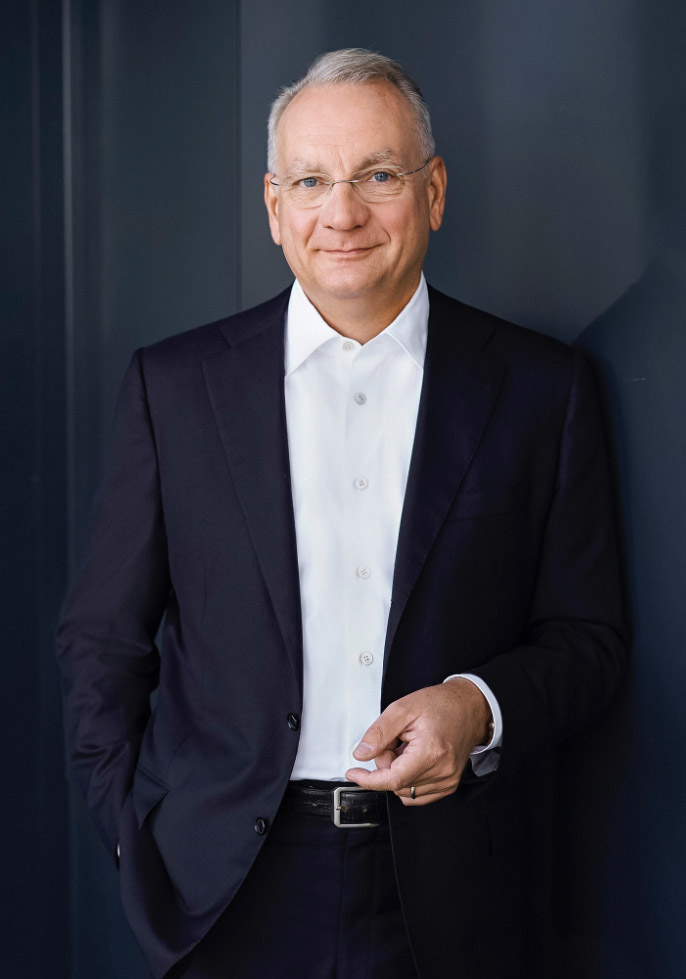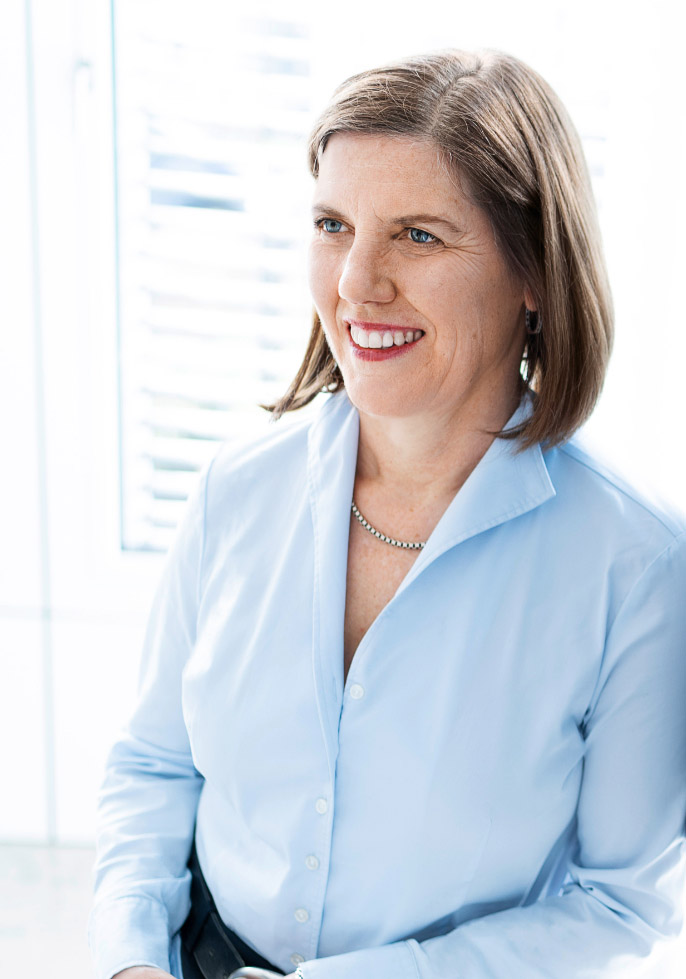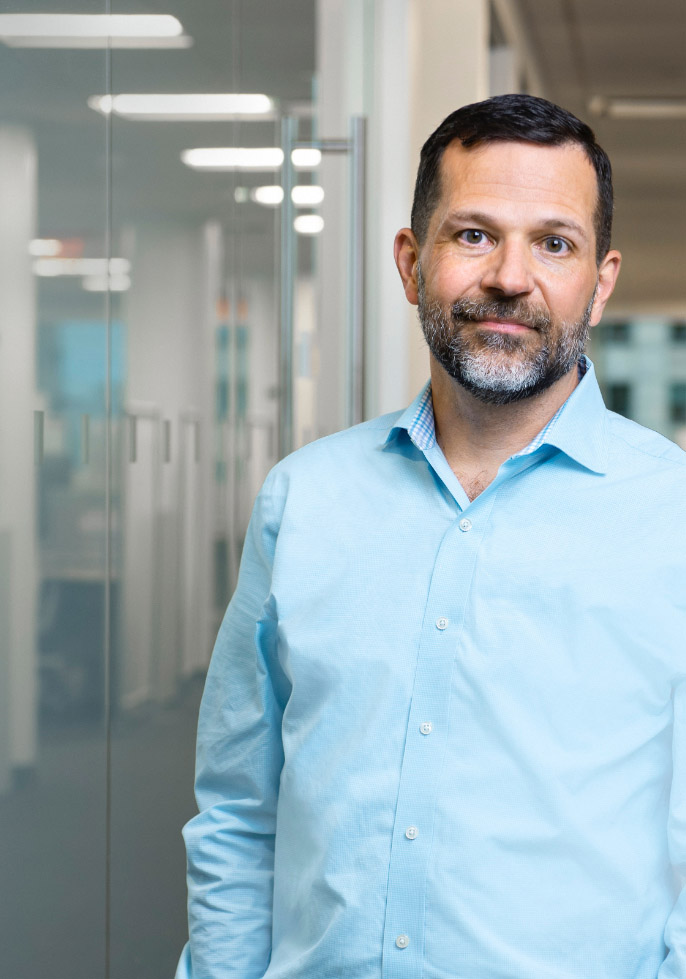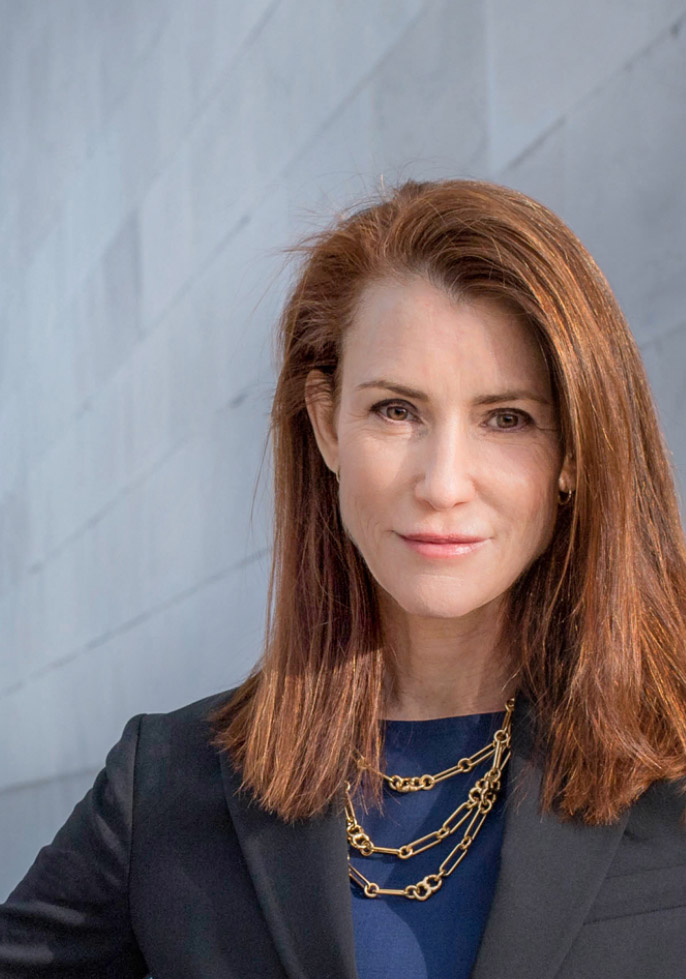The Road to
Monjuvi
Monjuvi’s accelerated U.S. FDA approval marked the transformation of MorphoSys from a research organization to a fully integrated biopharmaceutical company.
Up close, it resembles something like a Y, and its two upper “arms” can do one thing above all else: form a very specific and lasting bond. The antibody. A very particular antibody called tafasitamab (MOR208) is the focus of the next few pages. We invite you to join the MorphoSys team on an accelerated journey spanning ten years. It begins in 2010 with an idea, and thanks to a tremendous amount of dedication, passion, strategic vision, and perseverance – even in the face of unexpected obstacles such as the COVID-19 pandemic – it finally reaches its destination in July 2020 with the accelerated U.S. FDA approval of the drug Monjuvi® (tafasitamab-cxix), which brings a new treatment option to patients in need. In the U.S., where Monjuvi is currently approved, this drug can offer thousands of patients battling with diffuse large B cell lymphoma (DLBCL) the hope for better treatment.
Discover, optimize and produce novel antibodies for use as reagents, diagnostics and therapeutics was the idea that led to MorphoSys’ foundation almost 30 years ago. Now with Monjuvi, MorphoSys has brought its first proprietary medicine to patients after ten years of successful development and, as a fully integrated biopharmaceutical company, is now playing a leading role in a key area of medicine.

“With the approval of Monjuvi, MorphoSys has brought its first proprietary medicine to market and has become a fully integrated biopharmaceutical company. In light of its comprehensive development program, this is just the beginning of a promising future for Monjuvi, and for MorphoSys.”
Jean-Paul Kress, M.D.Chief Executive Officer
But let’s start from the beginning.
In 2010, MorphoSys already had one proprietary compound in clinical development and numerous others in early preclinical stages. But the ambitious biotech company wanted to go beyond this. “We wanted to expand our pipeline even further and develop medicines for patients in need, and were actively looking for a compound with convincing preclinical or first clinical data,” explains Barbara Krebs-Pohl, Ph.D., Senior Vice President and Global Head of Business Development & Licensing and Alliance Management.
Krebs-Pohl and her team scanned databases, evaluated recently published studies with candidates, approached their contacts, and participated in congresses and conferences. Then, at a U.S. biotech conference, the U.S. company Xencor introduced Krebs-Pohl and her team to the antibody tafasitamab. “It won us over right from the start,” says Krebs-Pohl, for several reasons.
Tafasitamab is a humanized and Fc-modified monoclonal antibody directed against the target antigen CD19, which is selectively present on the surface of B cells, a type of white blood cell. CD19 enhances B cell receptor signaling, which in turn exerts an important influence on B cell survival and growth. CD19 was not very well understood at the time – unlike the similar receptor, CD20 – so there was little competition. In addition, the receptor is present in many B cell tumor types and some autoimmune diseases. Most importantly, Xencor had optimized the so-called Fc-part of the antibody, which led to improved eradication of tumor cells in preclinical studies. As Krebs-Pohl recalls, “All this and the available data gave us hope that tafasitamab, as a therapeutic targeting this molecule, could become ‘best-in-class’.”
On June 28, 2010, a deal was announced. And both parties were satisfied. Tafasitamab – also called MOR208 – became part of MorphoSys’ pipeline.

“Tafasitamab offered us just the right balance of risk and reward: it was still early in the development stage and no clinical data existed yet, but the preclinical data was promising and we were hopeful that it could potentially change the lives of patients.”
Barbara Krebs-Pohl, Ph.D.,Senior Vice President and Global Head of Business Development & Licensing and Alliance Management

“Patients with relapsed and refractory DLBCL often face a poor prognosis and are in need of new treatment options. We believe tafasitamab has the potential to transform the standard of care and are proud to be driving innovation in this space.”
Malte Peters, M.D.Chief Research and Development Officer
The focus of preclinical research soon turned to non-Hodgkin’s lymphoma (NHL). And when MorphoSys received the latest interim results from one of the first clinical studies with tafasitamab, the message was clear: “We have a drug.” Some of the patients, as many as 30 %, had responded – and that was with tafasitamab as monotherapy.
In preclinical studies, we had already shown that the combination of the immunomodulator lenalidomide and tafasitamab showed promising efficacy which led to the decision to assess this combination in a clinical study.
The developers then set up a phase 2 clinical trial in DLBCL, called L-MIND, to investigate the efficacy of the tafasitamab-lenalidomide combination. It quickly became clear that it had the potential to be a promising combination. In 2017, based on the first interim results, the FDA granted breakthrough therapy designation, which is an important milestone for accelerated approval.
“This was enormously motivating for us,” says Mark Winderlich, Ph.D., Vice President and Head of Biostatistics & Data Management. However, there was one challenge: The L-MIND study, which was designed to be an exploratory study, was a single-arm study. To avoid losing any time, we pioneered a new approach in discussion with the FDA: To compare the data of the L-MIND combination study with data obtained with lenalidomide treatment alone, we generated a synthetic control arm from real-world data.
Collecting enough data from a prospectively designed retrospective study to assess the effectiveness of lenalidomide monotherapy compared to the tafasitamab-lenalidomide combination proved to be an exciting task: “We reached out to physicians in various countries and they reviewed hundreds of patient charts to identify patients treated with lenalidomide alone who also had comparable characteristics to those in L-MIND”.
Step-by-step, patient-by-patient, things progressed. And then, at the very end of 2019, on December 30, the application for approval, together with the necessary data, was submitted to the FDA.
While the team was focused on responding to the FDA’s inquiries along the way, the work continued to get ready for the launch. On January 13, 2020, MorphoSys and Incyte entered into a collaboration and license agreement to further develop tafasitamab and make it available to patients worldwide. Incyte is an attractive partner due not only to its experience with developing and commercializing hematology products, but also its vision, goals and scientific culture, which aligned with those of MorphoSys. The two companies are jointly responsible for the commercialization of Monjuvi which is the brand name within the U.S., whereas Incyte has the commercialization rights outside the U.S. This marked another step in preparing for the potential approval, which was granted by the FDA at the end of July 2020, one month ahead of the Prescription Drug User Fee Act (PDUFA) date. Monjuvi has since been available in the U.S. as the first and, to date, only second-line therapy in combination with lenalidomide for adult patients with relapsed or refractory DLBCL not otherwise specified, including DLBCL arising from low grade lymphoma, and who are not eligible for autologous stem cell transplant (ASCT).
By 2019, MorphoSys had the critical element it needed to launch into the DLBCL space – tafasitamab – a compound that could potentially fill a significant unmet need. And thousands of patients relapsing with DLBCL were waiting for effective treatment options. That was when MorphoSys made the decision to open MorphoSys US Inc. in Boston in preparation for the launch of the new blood cancer therapy. The goal for the team was clear. “We needed to get prepared to educate healthcare professionals about the new treatment option so the first patients could benefit from the treatment in a timely manner,” says Nuwan Kurukulasuriya, Ph.D., Senior Vice President and Global Head of Medical Affairs. MorphoSys US Inc. grew from a team of one in 2019 to a commercial and medical organization of 150 in 2020, sparking the transformation of MorphoSys into a fully integrated biopharma company.
Prior to the approval of Monjuvi, several objectives had to be met. The first was to understand the patient journey and educate healthcare professionals on the scientific rationale of targeting the CD19 antigen in DLBCL with a monoclonal antibody. Secondly, the team had to be comprehensively trained on the DLBCL clinical management and the Monjuvi profile. “Our goal all along was to ensure that this treatment regimen was getting to the right patients who could benefit from it,” says David Trexler, President of MorphoSys US Inc.
When the U.S. FDA granted the accelerated approval of Monjuvi, the MorphoSys’ field team was certified within days and began reaching out to physicians to introduce the new treatment option within the first week, knowing that every day counts for patients with this aggressive form of blood cancer. On July 31, 2020, MorphoSys and Incyte announced that the U.S. FDA had approved Monjuvi. Monjuvi was shipped to specialty distributors in the U.S. on August 5, the first customer order was received on August 7, and the first patient was dosed on August 13, less than two weeks after approval.

“It was inspiring to see our team come together from different functions and geographies, guided by a singular shared mission to bring Monjuvi – an important new cancer therapy – to healthcare providers and patients in urgent need across the U.S.”
Roland Wandeler, Ph.D.Chief Operating Officer

Vice President and Head of Global Supply Chain
“We were able to build a robust supply chain for Monjuvi in record time, thanks to a high sense of urgency, courage and collaboration of our colleagues and partners,” says Daniel Palmacci, Senior Vice President and Global Head of Technical Operations. This success was made possible by the team in Technical Operations. “Back in 2010, in parallel with the preclinical research on tafasitamab, we started the technical development of a manufacturing process, which over the years was engineered towards a highly sophisticated, robust and large-scale process, reliably delivering Monjuvi today,” says Ralf Ostendorp, Ph.D., Senior Vice President and Head of CMC (Chemistry, Manufacture and Control). An efficient commercial supply chain also had to be built from the ground up prior to Monjuvi’s approval. Ann Merchant, Vice President and Head of Global Supply Chain, took charge of that process. “In the beginning, we just had the two ends. On one end was the unlabeled product and on the other, the patients in need of this medicine,” Merchant explains.
Slowly, the supply network took shape: The antibodies are produced and bottled in Germany and then shipped to a central distribution center in the United States. Specialty distributors obtain Monjuvi from this warehouse and they, in turn, sell it to the clinics that have submitted orders.
Prior to approval, many trial runs and coordination processes were required. To this day, Merchant and the Technical Operations broader team function as a coordination point for all supply topics to ensure that all processes mesh neatly together and that the quantity and timing of supply are right. “We conferred once a week with everyone involved for several months, and then daily as the launch date neared. This required a lot of patience and stamina, but we were all dedicated to delivering our very best. It was clear to us that we were at the start of something special.”
When the time finally came, spirits were high. The U.S. FDA granted accelerated approval on a Friday afternoon, and the supply chain was set in motion over the weekend. Three business days later, the first vials were shipped to specialty distributors.
And now? With the supply chain in place and everything up and running, time to relax? Merchant smiles. “Every supply chain can be optimized in terms of speed, cost and reliability. That’s what we’re focusing on now.” And for any approvals received by MorphoSys down the line, Merchant already knows which partners she will be approaching.

“We were able to build a robust supply chain for Monjuvi in record time, thanks to a high sense of urgency, courage and collaboration of our colleagues and partners.”
Daniel Palmacci,Senior Vice President and Global Head of Technical Operations.

“We are building bridges with other DLBCL stakeholders every day. This helps not only the company, but also patients and physicians in a very tangible way.”
Christopher Mancill,Senior Vice President and Head Global & U.S. Value, Access & Policy
Christopher Mancill, Senior Vice President and Head Global & U.S. Value, Access & Policy, and Jill Robinson, Senior Director Public Policy & Advocacy, are also focused on understanding the views of external stakeholders. They want to know: What do DLBCL patients struggle with in particular? How might those with inadequate insurance coverage be helped? What are the special challenges that the treating physicians are faced with daily?
As with all diseases, there are various groups and organizations that support people impacted by blood cancer, each with individual interests and needs. These include research groups, patient organizations, foundations and political stakeholders. MorphoSys, as the developer and supplier of a potentially life-prolonging therapy for DLBCL, also belongs to this universe – at least since Monjuvi’s approval.
Since 2019, Christopher Mancill and Jill Robinson have been working on sustainably anchoring MorphoSys within this universe. They organize meetings with stakeholders, build networks and get connected. “We are constantly building bridges,” says Mancill.
“All of this is about a mutual exchange and, at the same time, a beneficial relationship. It’s about supporting each other and achieving something together,” says Robinson. MorphoSys provides targeted support where needed. During the current COVID-19 pandemic, for example, many patients are finding it difficult to get safely to the clinic for treatment. MorphoSys is stepping in and providing financial assistance through a partner organization to facilitate low-risk transportation for eligible patients. Treating physicians also still need support when it comes to making the best treatment decisions for their patients. Here MorphoSys lends its support to an organization designing independent practical daily guidelines based on a decision tree. “These are just two of the many examples where we have listened and are working to make a difference,” says Mancill.
For some time now, Mancill and Robinson have been inviting patients to speak to MorphoSys personnel. “After these visits, I often get thank-you e-mails from colleagues I did not know previously,” says Robinson. “When patients tell their stories, we can see for ourselves how much they rely on us and hear about the potential of Monjuvi. We are often literally their last hope. It’s very moving. It is also an enormous motivational boost for my colleagues and me to see that what we do saves lives.”

“Sometimes it makes all the difference when a patient is provided with safe transport to the clinic. That's when I know I can literally make a difference with my work.”
Jill Robinson,Senior Director Public Policy & Advocacy
Patients are at the center of everything we do. They are the motivation driving the entire MorphoSys team to rise above themselves and ensure that our first proprietary drug, Monjuvi, is the success it is today.
There is a great unmet medical need for patients with r/r DLBCL: in the U.S., where Monjuvi is currently approved, potentially 10,000 patients a year with relapsed or refractory DLBCL not otherwise specified, or previously considered almost out of treatment options, may have new hope. At the invitation of Jill Robinson and Christopher Mancill, some patients have the opportunity to come to MorphoSys, sit down, and share their own personal story and the hope they have related to Monjuvi.
“With the approval, a successful marathon stretching over ten years has reached a peak. We are more energized than ever by this milestone and full of optimism for the next level on our journey, developing tafasitamab as a potential backbone therapy of choice for B cell malignancies,” says Jean-Paul Kress, M.D., Chief Executive Officer.
Buoyed by the success in the U.S., MorphoSys and Incyte are now working on making tafasitamab available to DLBCL patients worldwide. Applications for approvals have already been filed in the EU, Switzerland and Canada, with other countries to follow.
Based on the recently confirmed data on Monjuvi’s efficacy, tolerability and side effects, additional clinical studies are underway for further and earlier applications in the treatment of blood cancer.
A milestone on the road to Monjuvi has been reached. And with the achievement of this milestone, many new opportunities are within reach.